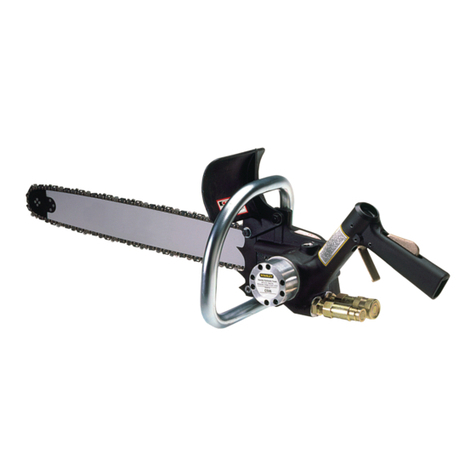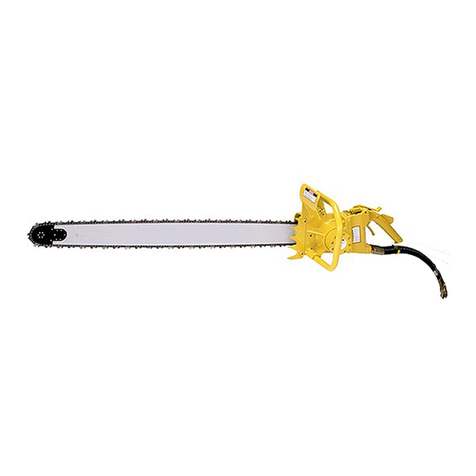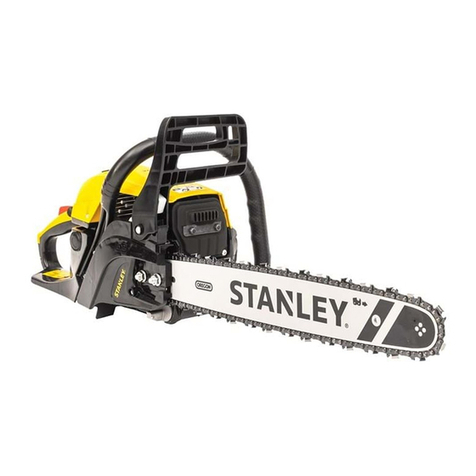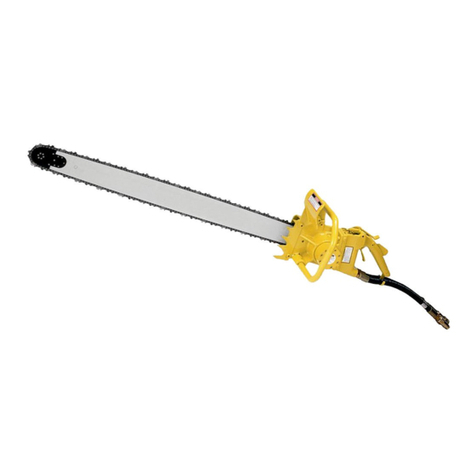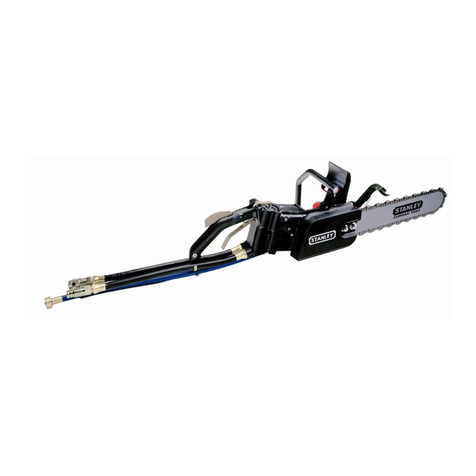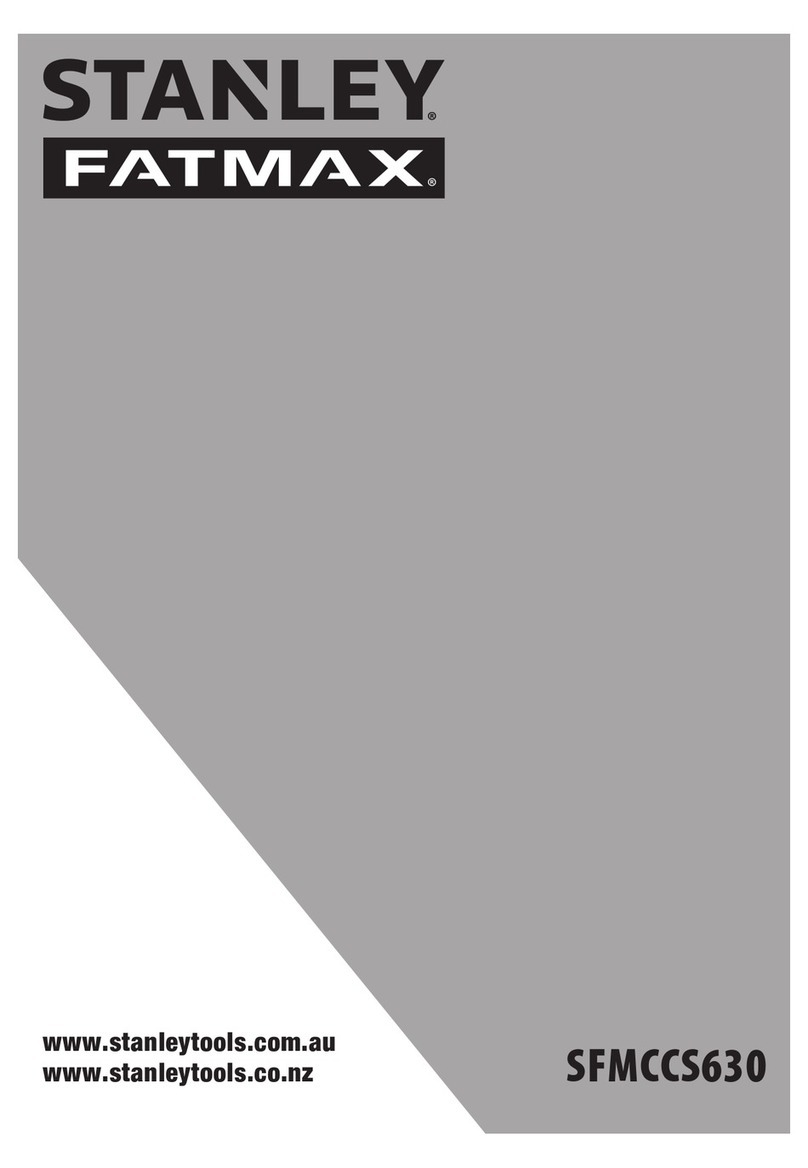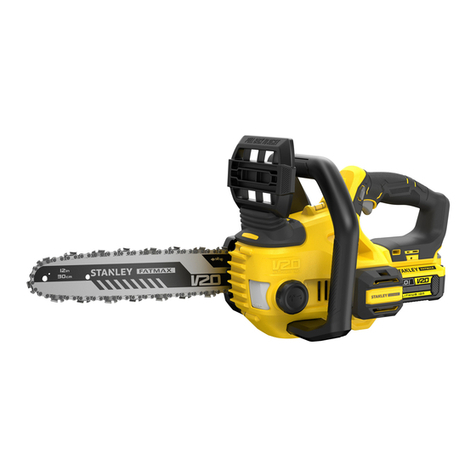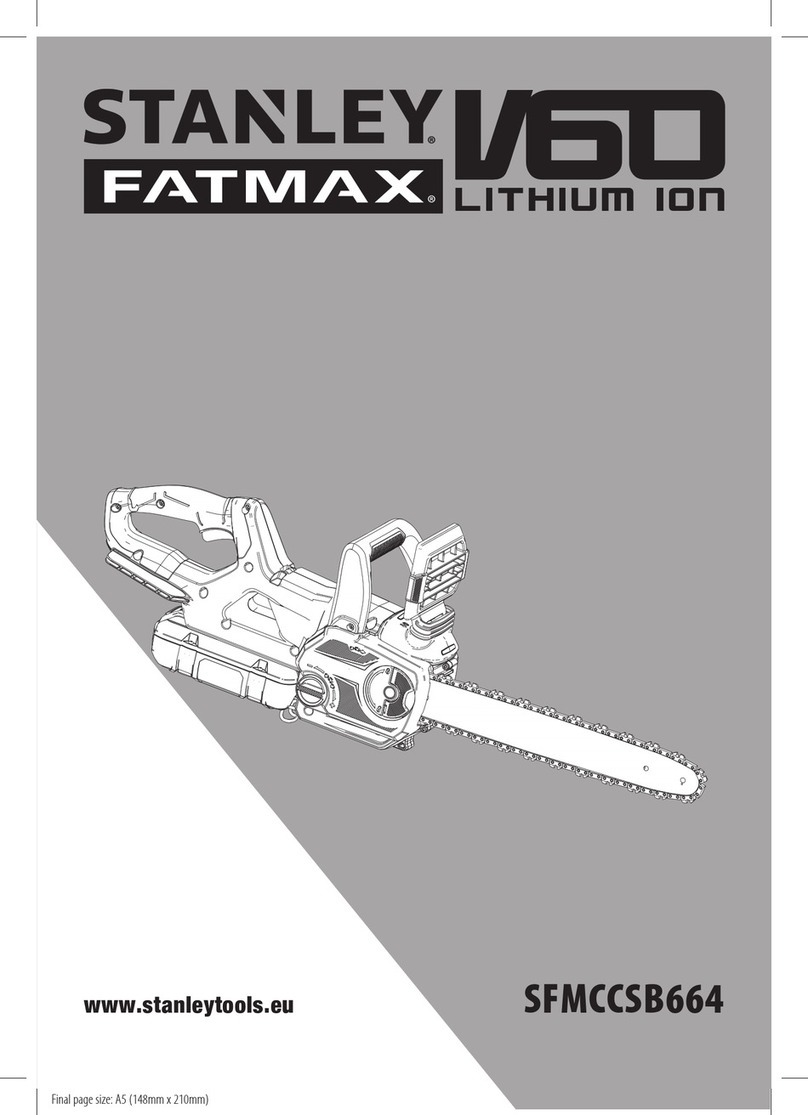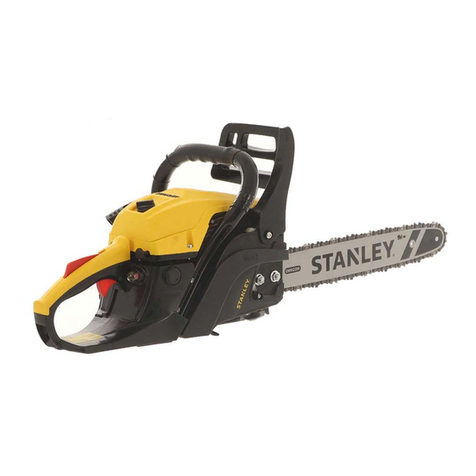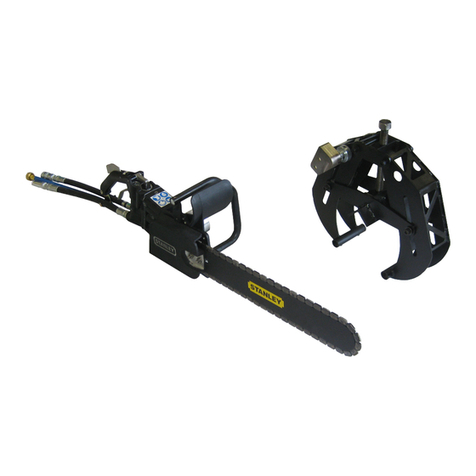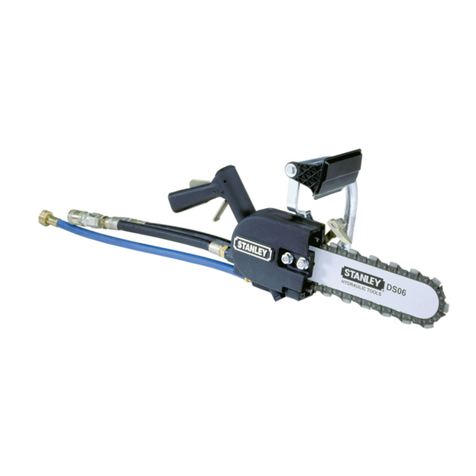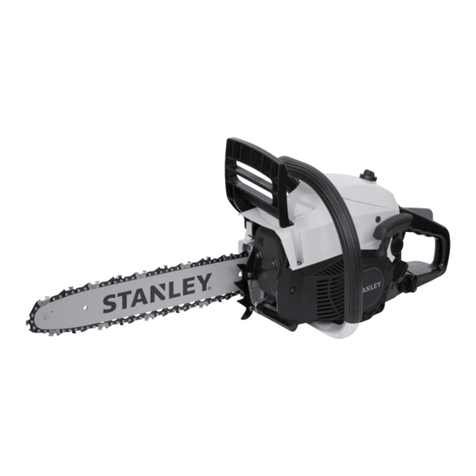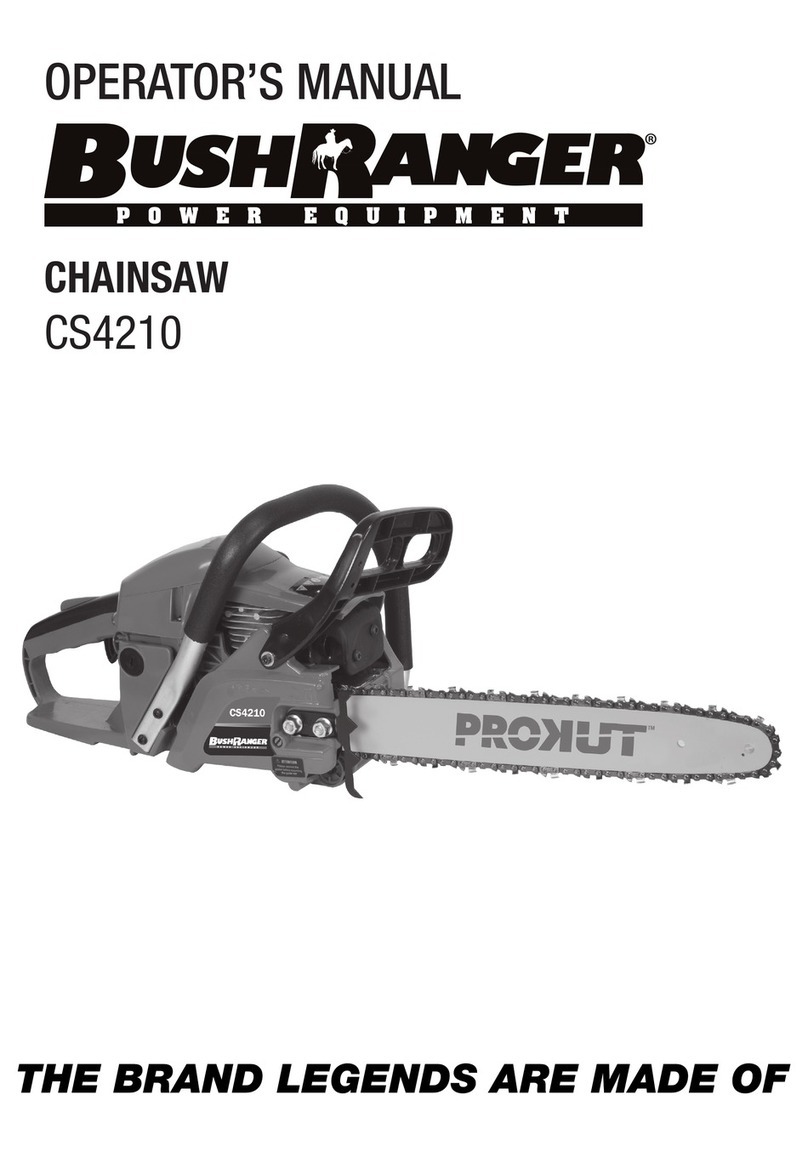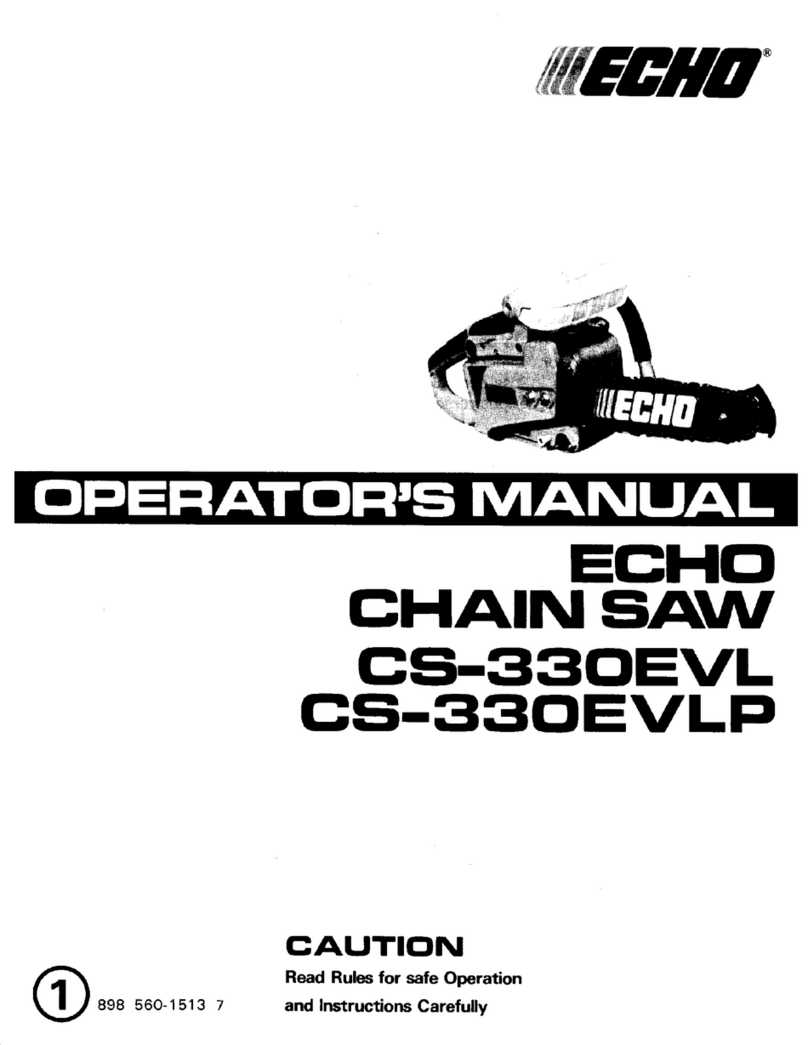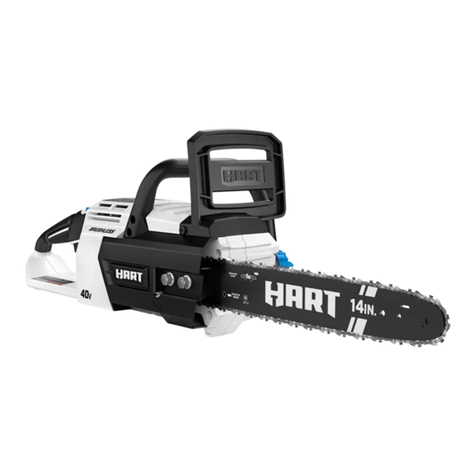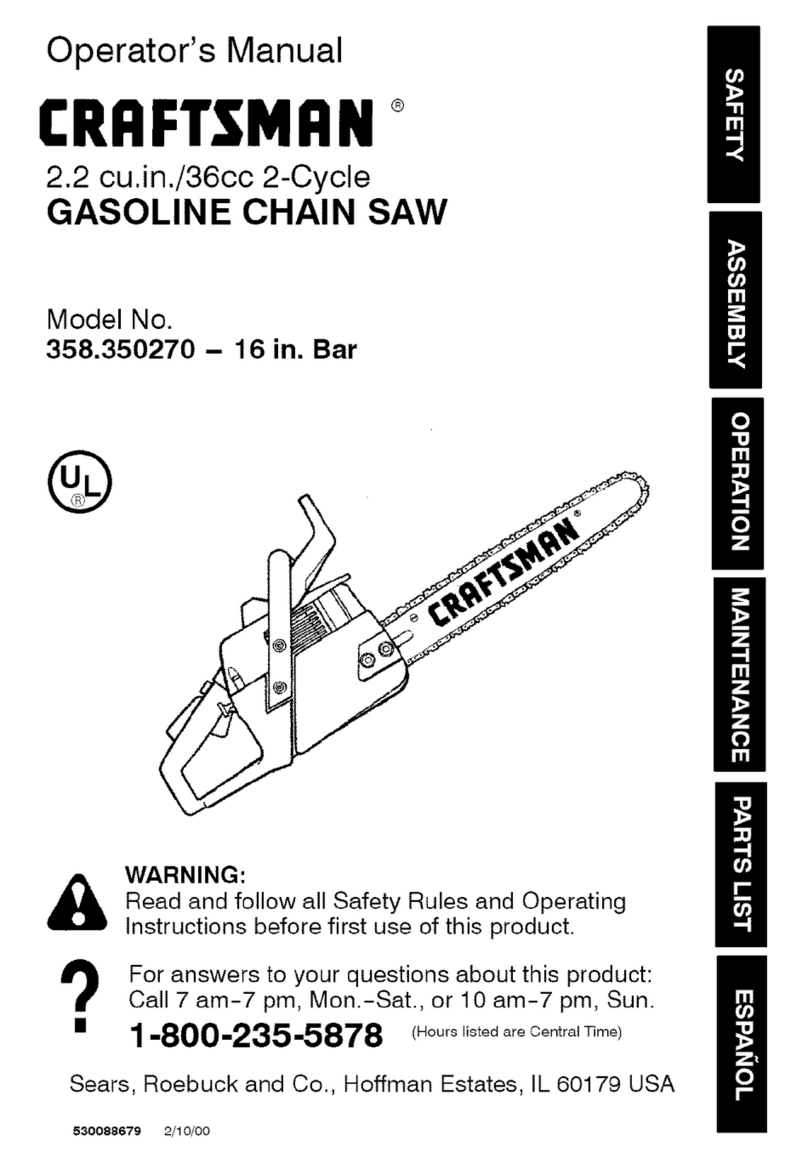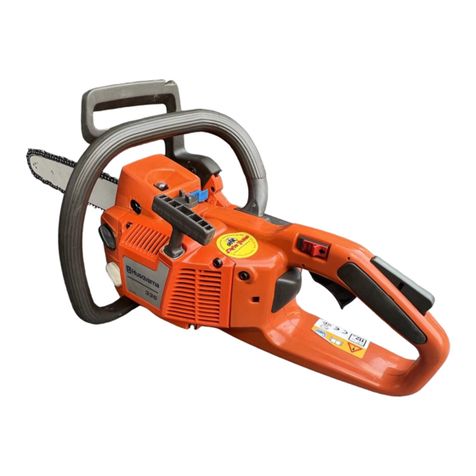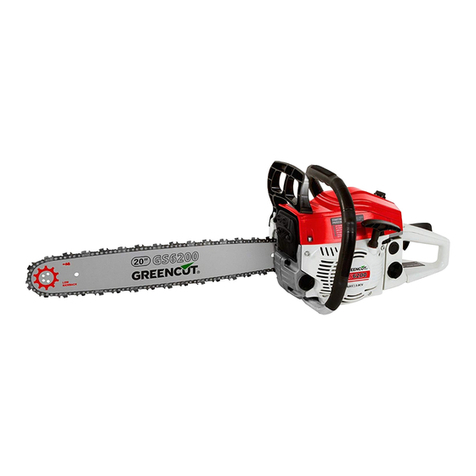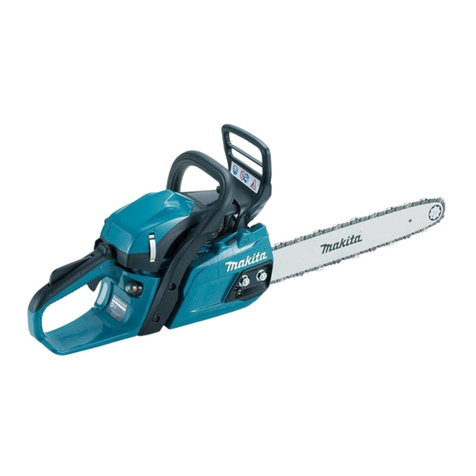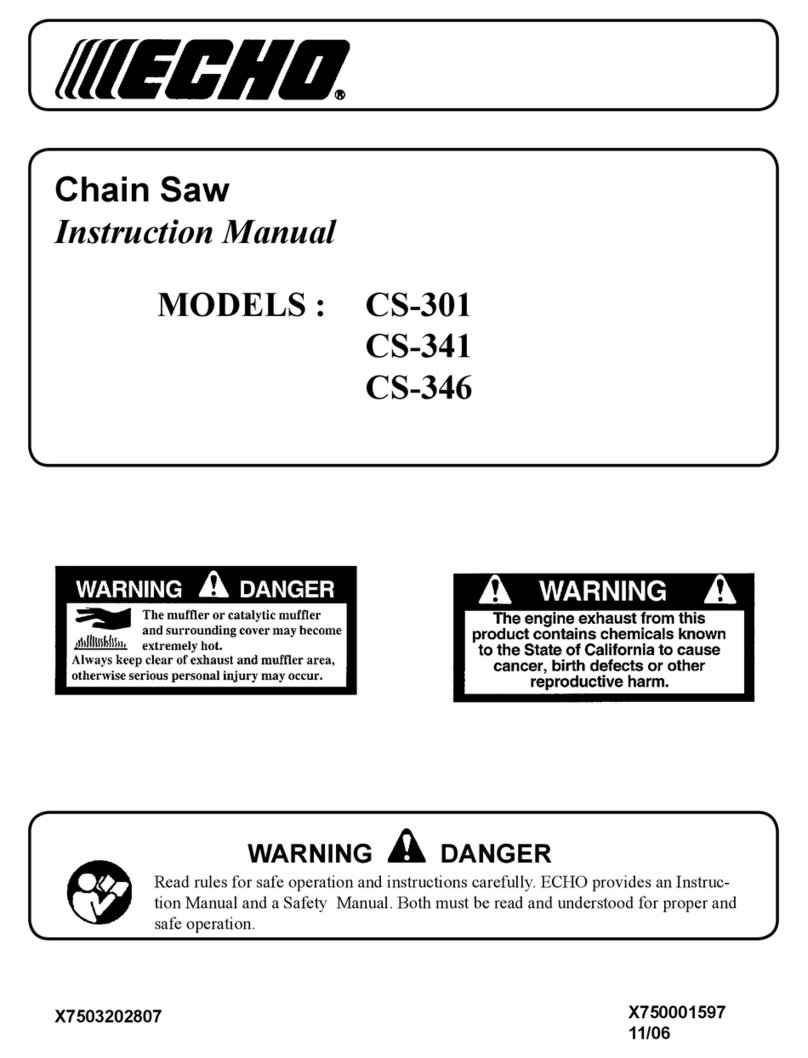5
SAFETY
Before attempting to operate this chainsaw the following
basic safety precautions should be taken to reduce the risk
of fire, electric shock and personal injury. It is important to
read the instruction manual and to understand applications,
limitations and potential hazards associated with this chainsaw.
It is important that you read, understand and follow these
instructions very carefully. They are designed for the safety
of yourself and others ensuring a long and trouble free service
life from your chainsaw. This chainsaw is not intended for use
by persons (including children) with reduced physical, sensory
or mental capabilities, or lack of experience and knowledge,
unless they have been given supervision or instruction
concerning the use of the appliance by a person responsible for
their safety.
OPERATING ENVIRONMENT
ALWAYS use your chainsaw in an open well ventilated
area. Do not expose your chainsaw to rain. Do not expose
your chainsaw to direct sunlight. Keep the work area well
lit. Do not use your chainsaw in areas where there is a risk
of explosion or fire from combustible materials, flammable
liquids, paint, varnish, petrol, etc flammable gases and dust
of an explosive nature. As a precaution it is recommended
that you consult an expert on selecting and using a
suitable fire extinguisher and have it available for use in an
emergency when operating the chainsaw.
BEWARE OF CHILDREN & PETS
Children and pets should be kept out of the operating area.
Children should not be allowed to touch or operate chainsaw.
All chainsaws should be kept out of reach of children. When
NOT in use keep the chainsaw preferably stored or locked in a
secure well ventilated cabinet or room with the fuel tank empty.
PERSONAL PLANNING
1. Restrict the use of your saw to adult users who understand
and can follow safety rules, precautions and operating
instructions found in this manual.
2. Keep all parts of your body away from the chain when the
engine is running.
3. Keep children, bystanders, and animals a minimum of 10
meters away from the work area. Do not allow other people
or animals to be near the chain saw when starting or
operating the chain saw. If necessary use warning signs to
keep on lookers at a distance.
4. Carefully plan your sawing operation in advance. Do not
start cutting until you have a clear work area, secure footing
and if you are felling trees, a planned retreat path. Do not
operate the chainsaw near a naked flame or spilled fuel.
After refuelling always wipe off any spilled fuel, move the
chainsaw away from the fuelling point before starting the
engine.
5. Do not operate a chain saw with one hand. Serious injury
to the operator, helpers, bystanders or any combination of
these persons may result from one-handed operation. A
chain saw is intended for two-handed use. Always maintain
a firm foothold. Ensure you are able to STOP the engine
quickly if necessary.
6. Do not operate saw from a ladder or in a tree.
7. Make sure the chain will not make contact with any object
while starting the engine. Never try to start the saw when
the guide bar is in a cut.
8. Do not put pressure on the saw at the end of the cut.
Applying pressure can cause you to lose control when the
cut is completed.
9. With the engine stopped, hand carry the chain saw with the
muffler away from your body and the guide bar and chain to
the rear, preferably covered with a scabbard.
SELECT A CHAINSAW WITH A
SUFFICIENT RATING
Select the right chainsaw for the job. Do not use a chainsaw
to do a job for which it was not designed. Do not force a small
chainsaw to do the job of a heavy duty chainsaw. Any damage
caused by overloading will void the warranty. Do not use
chainsaws for purposes not intended.
OIL
This chainsaw has a 2 stroke motor. Always use good quality 2
stroke motor oil to mix with the fuel.
FUEL
Note: Do not use ethanol blended fuels.
This chainsaw requires pre-mixed 2 stroke fuel. Ensure unleaded
fuel is mixed with 2 stroke oil before being decanted into the
generator fuel tank.
Fuel used in this chainsaw is poisonous. Always wear approved
breathing protection when decanting fuel. If you get any fuel
on your skin or clothes wash the affected area immediately
with soap and water and change your clothes. If you get fuel in
your eyes wash immediately with clean water and seek medical
attention. If any fuel is swallowed DO NOT induce vomiting,
seek immediate medical attention.
HOT COMPONENTS
Beware many of the components will get hot during use. Never
touch any of the metal pipes, pump or motor as these may burn.
